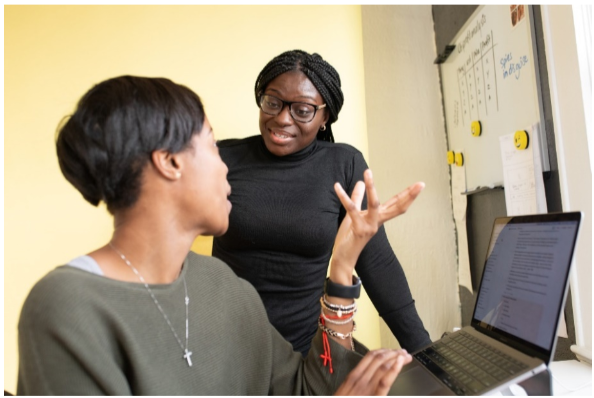9.0: Introduction
- Page ID
- 55267
Learning Objectives
After reading this chapter you should be able to:
-
Define interpersonal communication.
-
Explain self-disclosure.
-
Understand the role of communication climate on interpersonal communication.
-
Be aware of the role of dialectical tensions in interpersonal communication.
-
Understand the unique dynamics of friendship.
-
Understand the unique dynamics of romantic relationships.
-
Understand the unique dynamics of family.
-
Understand the various ways of interpreting and responding to conflict in interpersonal communication.
Think about your relationships in the last few years. You may have just transitioned from high school to a community college or university. Perhaps you and your friends from high school went to different colleges and are now living far apart from each other. If you have recently been separated by distance from friends or family, you have noticed that it is more difficult to stay connected and share all of the little things that go on in your day. As you continue to grow and change in college, it is likely that you will create relationships along the way. Being away from your family, you will probably notice changes to your relationships with them. All of these dynamics, and many more, fall under the scope of interpersonal communication.

Figure 1
Before going any further, let us define interpersonal communication. “Inter” means between, among, mutually, or together. The second part of the word, “personal” refers to a specific individual or particular role that an individual may occupy. Thus, interpersonal communication is communication between individual people. We often engage in interpersonal communication in dyads, which means between two people. It may also occur in small groups such as you and your housemates trying to figure out a system for household chores.
Important to know, is that the definition of interpersonal communication is not simply a quantitative one. What this means is that you cannot define it by merely counting the number of people involved. Instead, Communication scholars view interpersonal communication qualitatively; meaning that it occurs when people communicate with each other as unique individuals. Thus, interpersonal communication is a process of exchange where there is desire and motivation on the part of those involved to get to know each other as individuals. We will use this definition of interpersonal communication to explore the three primary types of relationships in our lives—friendships, romantic, and family. Given that conflict is a natural part of interpersonal communication, we will also discuss multiple ways of understanding and managing conflict. But before we go into detail about specific interpersonal relationships, let’s examine two important aspects of interpersonal communication: self-disclosure and climate.
Pin It!
Interpersonal Communication Now - Melanie Booth And Self-Disclosure In The Classroom
One emerging area of interest in the arena of interpersonal communication is self-disclosure in a classroom setting and the challenges that teachers face dealing with personal boundaries. Melanie Booth wrote an article discussing this issue, incorporating her personal experiences. Even though self-disclosure challenges boundaries between teacher-student or student-student, she states that it can offer “transformative” learning opportunities that allow students to apply what they have learned to their life in a deeper more meaningful way. She concludes that the “potential boundary challenges associated with student self-disclosure can be proactively managed and retroactively addressed with careful thought and action and with empathy, respect, and ethical responses toward our students” (Booth).
References
- Image by NAPPY STUDIO is licensed under CC0

